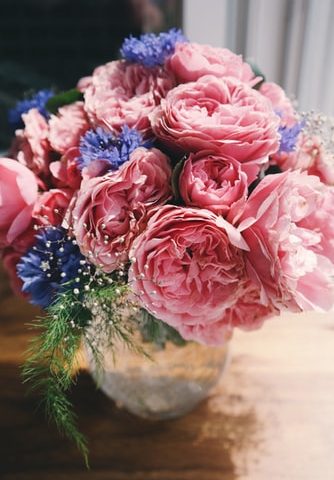Participating in a flower arranging course may ease both pain and improve the mental health of women with fibromyalgia, a study reports.
Its findings highlight the potential of floristry as an occupational therapy with benefits for the quality of life of people with the condition.
The study “The Powers of Flowers: Evaluating the Impact of Floral Therapy on Pain and Psychiatric Symptoms in Fibromyalgia” was published in the journal IMAJ.
As little is known about the root cause of fibromyalgia, treatments thus far have focused on relieving symptoms.
Fibromyalgia is characterized by chronic, widespread pain and fatigue, and is often accompanied by other conditions such as bowel disorders and headaches, as well as depression and mood disorders.
Current treatment guidelines recommend a multimodal approach that includes aerobic exercise and cognitive behavioral therapy, in addition to medications. Recently, alternatives like occupational and art therapy have emerged as potentially beneficial.
Researchers with Sheba Medical Center and Tel Aviv University, in Israel, decided to test if taking part on a weekly course on flower design could alleviate pain and psychiatric symptoms in fibromyalgia patients.
The idea was based on the observation that being in touch with natural environments, specifically horticultural therapy or gardening, promotes relaxation and has a “beneficial impact on mental health and general well-being,” the team wrote.
The observational study included 61 women (mean age, 51) who were recruited to participate in one of two 12-week flower design (floristry) courses; 31 patients participated in the first floristry course (study weeks 1–12) and 30 in the second (weeks 12–24).
Flower design and arrangement is a form of occupational therapy in which people learn how to use floristry methods for self-expression. In this study, women had weekly sessions supervised by a trained florist, where they learned how to create flower bouquets that they could take home.
At the study’s start (baseline), at 12 weeks, and at its completion (week 24), disease activity indices, and anxiety and depression scores were determined and compared between the two groups.
Assessment tools included the patient-self reported SF-36 survey, Brief Pain Inventory (BPI), Visual Analogue Scale (VAS), and Fibromyalgia Impact Questionnaire (FIQ), as well as the tender-point count.
The study also assessed depression using the Hamilton Depression Rating Scale (HDRS), and anxiety using the Hamilton Anxiety Rating Scale (HAMA).
After the classes, women in each group felt significant improvements in their physical and mental health, and a relief in pain and disease severity. Alleviation of depression and anxiety symptoms were also noted.
Tender-point counts remained unaffected, which perhaps is not surprising as this assessment tool “was removed from the revised diagnostic criteria for fibromyalgia in 2010 due to the problematic nature and validity,” the researchers wrote.
Evaluating the groups separately, researchers noted a slight reversal of benefits in the first group after their course ended (weeks 12 to 24). However, the measurements did not go back to starting levels, “indicating a persisting impact of the intervention,” they wrote.
“Our study indicates that participation in a floristry course may lead to a significant improvement in pain and psychiatric symptoms in fibromyalgia patients,” the researchers concluded.
This course provided patients’ engagement with natural elements (flowers), a type of contact previously seen to promote relaxation, reduce blood pressure and heart rate, and positively impact stress, mood, and emotions.
Flower design also provides a means of self-expression via art therapy, recognized as a potential method for alleviating psychiatric symptoms.
Researchers noted some limitations that should be addressed in future studies; specifically, a comparison with patients who withdrew from the course (here the dropout rate was 12.8%) and tests in larger patient groups.

